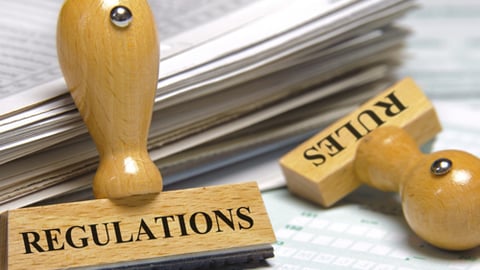Taming & Mastering the Internet of Things Beast
CHICAGO — How do retailers tame and master the beast that is the Internet of Things (IoT)?
That’s a question Veeder-Root President Andrew Robinson tackled at the recent 2018 Conexxus Annual Conference.
In an effort to better understand the convenience store landscape, Robinson immersed himself in the day-to-day operations at a Quality Oil location, getting his hands dirty as a cashier.
Following his time on the job, he came away with a handful of key takeaways:
- There was limited adoption of tech standards;
- A mixed network of old and new equipment;
- Outdated site and system architectures;
- High cost of wired connectivity; and
- Rapidly changing security environment.
Meeting these needs through connectivity has been challenging, according to Robinson, who pointed out that the connectivity journey has slowly iterated forward.
Retailers always need to be monitoring site revenue, making sure site operations and security are running smoothly and efficiently, and managing their assets.
Using IoT, Quality Oil managed to enhance its fuel supply chain decision with real-time data from rack nozzles; save energy while maintaining food safety; ensure profitable car washes were available and ready to serve; and even notify store associates when the receipt paper was out or a filter was clogged.
Research and advisory firm Gartner defines IoT as "the network of physical objects that contain embedded technology to communicate and sense or interact with their internal states or the external environment."
Robinson sees IoT as something that will continue to revolutionize the shopping experience. And he believes now is the time for convenience store and fuel retailers to utilize it in-store and at the fuel pumps, as new developments such as connected cars affect the industry.
IoT presents a unique opportunity in retail to provide transformational consumer experiences by helping retailers understand consumer behaviors both in-store and in-car, according to Robinson. It can help retail employees deliver more personalized customer service, and enable store managers to be more productive and effective. Operations can see a boost with remote asset management and predictive maintenance, along with improved store operations efficiency, the ability to track inventory in real time, and optimized environmental control.
EMV is already driving a huge turnover in terms of the IT infrastructure that sits at a site, according to Robinson, who predicts that by the 2020s, all tech devices will be wirelessly connected to the internet. Additionally, all point-of-sale will be new, and sensors that can measure data in and out of store can be utilized.
In order to "master the beast" that is IoT, retailers should aim to increase their effectiveness in troubleshooting sites and get smarter, actionable insights on remote assets driving TCO (total cost of ownership) and profitability, advised Robinson.
Retailers should ask themselves what job they need done better. Is it headquarters, fuel and store operations, or back-office and administrative operations? Then, it’s time to define the business goals that can be achieved through IoT technology.
The following can be made possible with IoT:
- Increase uptime and efficiency;
- Improve marketing information;
- Improve energy management;
- Reduce operations cost;
- Reduce food waste; and
- Improve compliance.
IoT enables retailers to monitor, manage and predict on any device, and it gives retailers a way to make good use of their data, integrating connected devices into a scaleable site architecture.
With a rising focus on data, the importance of security rises as well. One objective retailers should have is to "create a common security framework for integration of various types of devices for cloud connectivity and data transport," according to Robinson.
He suggests that small retailers struggling to manage their data outsource the job to services that can synthesize their data into actionable information.
When devices come online, retailers can easily accomplish a variety of tasks, such as monitoring the corrosion on fuel tanks and discerning what the octane levels are. In-store, connected sensors can monitor how much syrup is left in a soda machine.
In short, according to Robinson, the Internet of Things stands to help retailers make better business decisions. Instituting it will be an investment, but it’s likely to be one with tangible returns, he said.
The 2018 Conexxus Annual Conference took place April 30-May 3 at the Loews Chicago O'Hare hotel.







